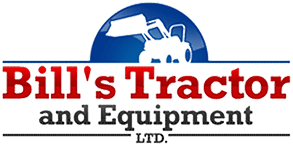Picking The Right Tractor For Me
Tractors are certainly incredibly versatile and helpful pieces of equipment. They're also definitely an investment, and of course you don't want to make the wrong choice. So how do you know which tractor to choose or where to even start? Whether this is your first tractor or not, there are a few main criteria to look at when narrowing down your search options.
PICKING THE RIGHT TRACTOR FOR ME
1. What Size Do I Need
Most tractors are purchased with a few specific jobs in mind. However, once people have a tractor, they realize how useful they are for all sorts of jobs; people end up using them for several other tasks they hadn't initially thought of. Keep this in mind when choosing between the various tractor sizes. If the main job you're looking to accomplish is at or near the limits of say a subcompact tractor, you will probably want to opt for a compact tractor instead. Your dealer can help you choose the right size for your intended usage as well as your potential usage.
2. Consider The Attachments
Your new tractor's attachments are what really make the tractor worthwhile. Prioritize what jobs you are looking to do with your tractor. The most popular attachments tend to be front end loaders, tilers, shredders and post hole diggers. Talk with your dealer about what jobs you are looking to use your tractor for, and they can help you decide which attachments will be best for your needs. Other popular attachments to consider are grapples, blades and backhoes.
3. The Right Kind Of Tires
Typically, tractors came with either turf, industrial or ag tires. Turf tires are the least aggressives and are made for operating on exactly what the name implies- grass. Industrial tires are harder and are made to resist wear and tear from gravel or paved surfaces. Ag tires are designed to gain as much traction as possible in fields. This is usually a fairly straightforward decision but these options are something you should be aware of when choosing a new tractor.
4. Cab Or No Cab
While cabs keep you more comfortable in extreme climates, open-station (or no-cab) tractors are easier and faster to get into and out of. This usually comes down to personal preference and expected usage - will you need to get on and off of your tractor often as you're working? Do you need heat and air conditioning for working on extreme hot or cold days? Will you need to work even when it's raining?
5. The Dealership Matters
Your relationship with your dealer is a partnership that will last for years. When visiting a potential dealer, ask lots of questions; their expertise should shine through, and they should be able to answer or find answers to all your questions. Be sure to also ask about the service and parts department as this is where you will interact the most down the road. Also ask if you can operate/drive the tractor, ask about warranty and financing options, etc.
6. The Obvious But Often Overlooked Factor
Whatever tractor size you choose, make sure it fits in your barn or storage area! This one seems obvious, but we've heard countless stories about people getting the tractor home only to then discover that it doesn't fit inside whatever structure they had planned on storing it in. While having some kind of equipment shed is technically optional, storing your tractor outdoors does negatively impact its longevity. So, if you have an equipment shed, just be sure to check the physical dimensions of your new tractor to make sure it will fit.

